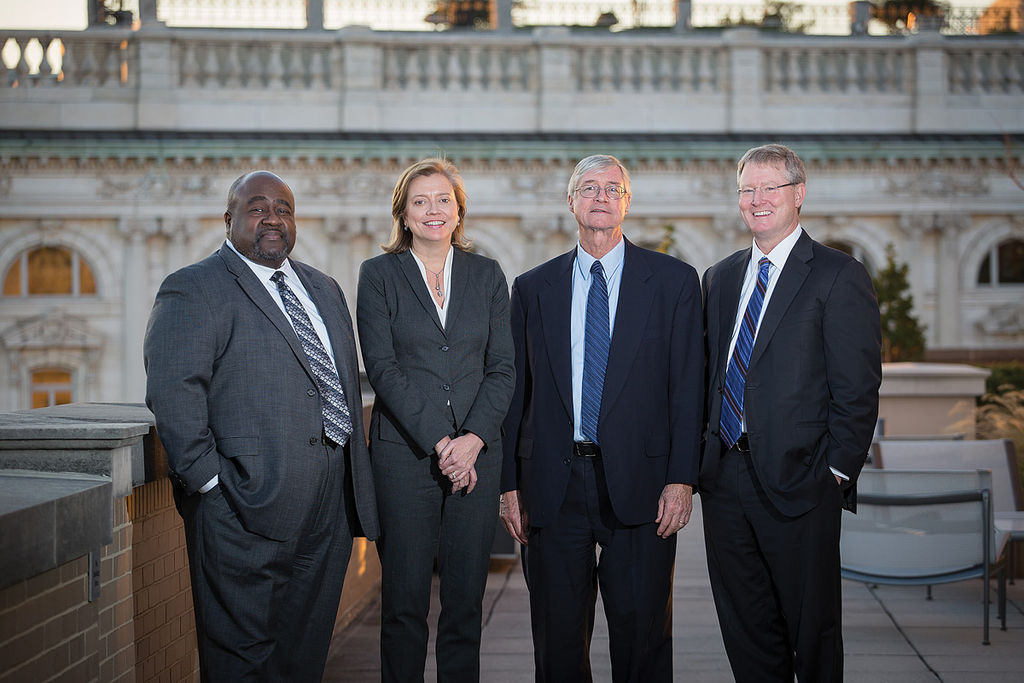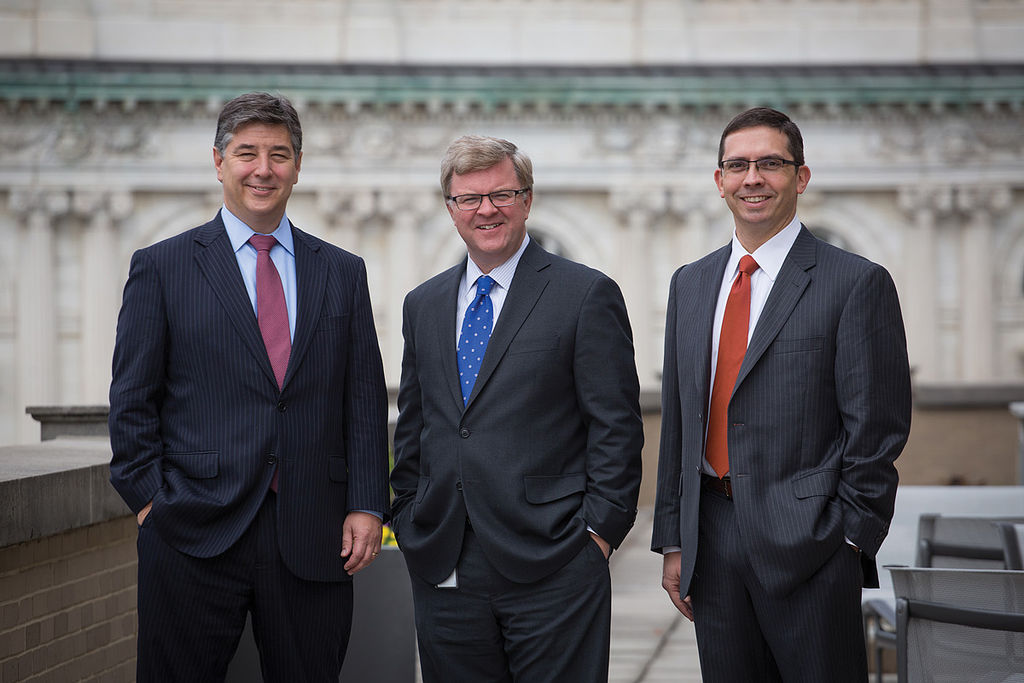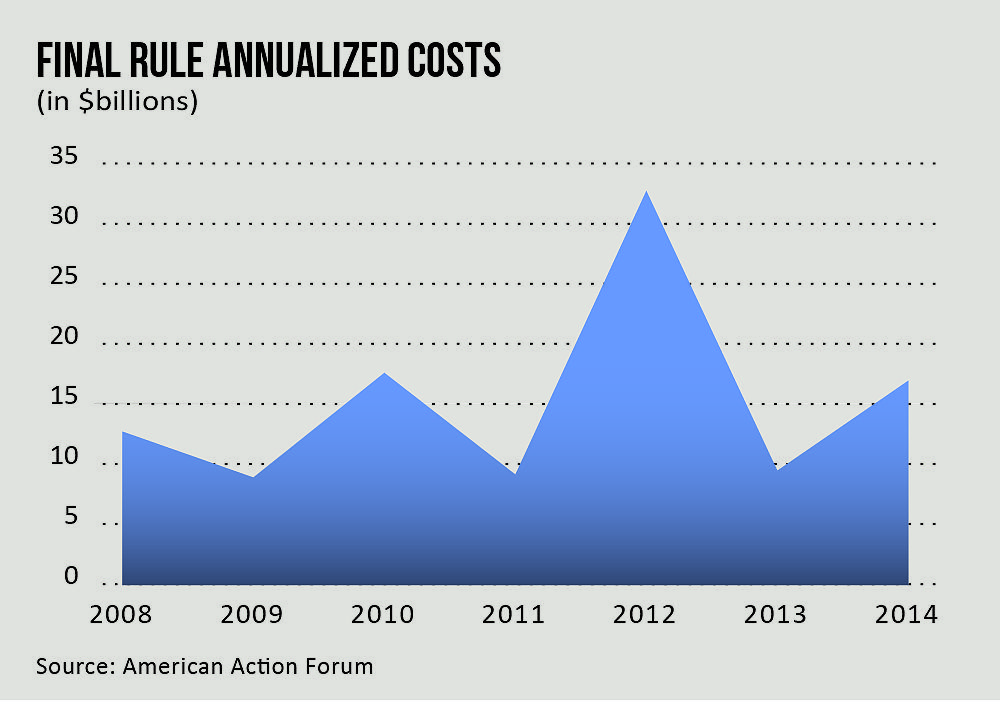Regulatory 2016 - The State of Play
Publication | 01.19.16
While previous administrations have slowed down in their final year, the Obama administration is poised to push through its agenda.

In last year's Regulatory Forecast, we predicted—accurately—a continued expansion of the unilateral exercise of power by the executive branch. This year looks to be more of the same—and then some.
"The year 2015 saw an overwhelming tide of executive action," says Angela Styles, chair of Crowell & Moring and former administrator for Federal Procurement Policy within the Office of Management and Budget (OMB) at the White House. "Whether you agree with the president or not, it's impressive in the way he has marshaled his resources to get things done. Now we're entering the last year of an eight-year presidency. There is a lot of unfinished business and an appetite in the executive branch to make hay while the sun shines. The regulated community should prepare for a continued intensification of agency action both on the policymaking front and in enforcement."
There will be little to stand in the administration's way. In Congress, gridlock will likely foil most Republican attempts to roll back the administration's initiatives. Nor do the courts seem likely to pose much of a challenge. Many of the federal appeals courts—most importantly, the U.S. Court of Appeals for the District of Columbia—are now dominated by judges appointed by Democrats. And established legal precedents require courts to defer to agency interpretations of their authority, even new interpretations that reverse longstanding prior interpretations, when they are challenged (though there are signals that the Supreme Court may be rethinking deference).
Way back in his first presidential campaign, Barack Obama identified three domestic priorities for action: financial services, climate change, and health care reform. A fourth priority—reducing income inequality, primarily through executive orders and labor and employment regulations—came to the fore in 2015. On balance, the administration has shown little concern for the viewpoints of industry or its political opponents as it pursues its agenda. But its approach to pursuing each of these priorities has differed sharply depending on whether it has won legislative backing.
"Where they have had the statutory foundation for action—like the Affordable Care Act in health and Dodd-Frank in financial reform—the administration has proceeded in a more deliberative and less confrontational fashion," says Thomas C. "Tim" Means, senior counsel at Crowell & Moring. "This was the way the system was supposed to work. But in areas like climate change and labor and employment, the administration has received no legislative imprimatur. It's pushing the envelope, and it's paying less attention to the other side's concerns. These actions will be challenged at every juncture, and in the meantime there will be a lot of uncertainty for business."
Here's a brief progress report for each of the president's priorities.
LABOR AND EMPLOYMENT: RADICAL READJUSTMENTS
Spurred by concerns about increasing income inequality and declining economic mobility, the Obama administration launched an aggressive campaign last summer aimed at bolstering the middle class. In July, the U.S. Department of Labor (DOL) proposed a rule that could make more than 5 million more workers eligible for overtime pay. The minimum pay for an employee to be considered salaried would rise to $50,440 from $23,660, a level based on a 1975 threshold. "It's a big deal in retail and hospitality, because a lot of assistant store managers, branch managers, and the like will now be eligible," says Kris Meade, chair of Crowell & Moring's Labor & Employment Group. A final rule is expected in late 2016, near the time of the presidential election.
Also in July, the DOL issued new guidance suggesting that many employers are misclassifying workers as contractors and thereby depriving them of workplace protections. The guidelines could affect the growth of the "gig economy" pioneered by companies like Uber.
In August, the National Labor Relations Board ruled that unions representing a franchisee or subcontractor may often be entitled to bargain with the parent company or prime contractor as well as their direct employer. The ruling could make it easier for workers to unionize or to hold large franchisors liable for alleged violations of workers' rights, and critics say it threatens the viability of franchising itself.
While these developments have won headlines, another initiative may have an equally large impact on large employers. As required by a July 2014 executive order, the DOL has proposed that companies must identify "various labor law violations" at the time of bidding for government contracts. "The rule could impact most large employers, because very few large companies aren't contractors these days," says Styles. "Companies will be evaluated based on alleged violations even if they haven't had any hearings on the merits. Because the agency will consider whether the company tried to 'mitigate' the violation—which usually means a settlement—the company may be forced to relinquish its appellate rights to continue as a contractor. Finally, the rule would also require companies to develop huge new databases to keep track of these alleged violations. Litigation is sure to follow issuance of the final rule by the DOL and the Federal Acquisition Regulatory Council.
Meanwhile, on December 17, 2015, Congress passed the FY 2016 Omnibus Appropriations bill, which included a denial of the administration's request for $2.62 million and 15 full-time staff to establish the Office of Labor Compliance to implement the executive order. This leaves the implementation of the executive order in a state of limbo as 2016 begins.
CLIMATE: "UNPRECEDENTED" ACTION
As in labor and employment, climate regulation is another area where the Obama administration is going it alone after failing to convince Congress to pass legislation. In 2015, the U.S. Environmental Protection Agency (EPA):
- Proposed the first standards to limit greenhouse gas emissions from medium- and heavy-duty vehicles (in June).
- Proposed a rule restricting the emissions of existing power plants (in June).
- Finalized rules limiting the carbon emissions of new power plants (in August).
- Proposed new rules requiring the oil and gas industry to cut methane emissions by 20 to 30 percent (in August).
"They clearly are going to push through as many proposals as they can before the end of the administration," says Elliott Laws, chair of Crowell & Moring's Environment & Natural Resources Group and former assistant administrator for Solid Waste and Emergency Response at EPA. "For political reasons they were unwilling or unable to move forward with these earlier in the president's term, but now they don't seem to be constrained by criticism from the left or right. And with continued congressional gridlock, we are seeing a level of activism in the regulatory arena that is unprecedented."
The administration will spend much of 2016 finalizing rules and fighting legal challenges to its 2015 initiatives. The most bitter fights will likely occur over the Clean Power Plan, which proposes to reduce carbon dioxide emissions by 32 percent over 2005 levels by targeting existing plants. State attorneys general challenged the plan in court even before the final rules were published, and industry is also challenging the EPA's authority to issue the regulation. Senate Majority Leader Mitch McConnell (R-KY) has encouraged states not to obey a federal request to submit compliance plans.
"The Clean Power Plan will put some utilities and energy companies in a difficult situation in terms of making plans," Laws says. "Energy is a capital-intensive business with a long planning cycle. They are making very expensive multiyear decisions to replace the power from coal with natural gas or with technology such as wind and solar, which are less proven or reliable. But even as the rules are being challenged, some states will press forward with implementation, while others may have a federal plan forced upon them. Some industries will fight the regulations harder than others. But ultimately, I think many utilities will move forward with their states in implementing a rule they can accept, instead of fighting to the bitter end with the risk of getting something they can't live with."
FINANCIAL REFORM: SEEKING "BALANCE"
While the fight over climate rules is just beginning, the administration has largely had its way with financial reform, having adopted final rules for the vast majority of mandatory rulemaking provisions of the Dodd-Frank Act. "In 2016, we'll see fewer rules implemented and more negotiations about how to implement the ones that remain with a little more balance," says Mike Gill, Crowell & Moring counsel and an associate member of the Commodity Futures Trading Commission's (CFTC) Energy and Environment Markets Advisory Committee. While Dodd-Frank has imposed much higher compliance burdens on U.S. financial firms, the administration may yet relent on some highly controversial rulemakings, such as the proposed requirement that entities clear all intra-affiliate swaps, he says.
One outstanding question is the degree to which Dodd-Frank rules apply to transactions involving foreign banks. For example, proposed rules declare that a transaction between two foreign banks would be considered a U.S. transaction—and therefore subject to registration and reporting rules—simply if one of the banks uses a U.S. back office. "These rules threaten a lot of good-paying U.S. jobs because banks seeking to avoid the strict regulations of Dodd-Frank might pull their back-office operations out of the U.S.," Gill says.
Similarly, Dodd-Frank requirements involving reporting and registration of derivative transactions—while aimed at preventing another financial crisis—run afoul of European data privacy and protection laws. Recognizing the issues, last August the CFTC decided to postpone for one year a requirement that non-U.S.-based swap dealers register certain transactions.
"The Obama administration assumed that foreign entities would just submit to our laws," Gill says. "Instead, the rules threaten the international competitiveness of U.S. financial firms, clearinghouses, and repositories. I think a lot of 2016 will be spent trying to harmonize U.S. and international law."
HEALTH: FOCUSED ON COSTS
Like Dodd-Frank, the Affordable Care Act (ACA) has been mostly implemented and upheld in the courts—and despite fierce Republican opposition, won't be overturned in 2016. "The focus now is on controlling costs," says Scott Douglas, a senior policy director in Crowell & Moring's Government Affairs Group and former finance director for Sen. McConnell.
While millions of Americans have gained coverage from the ACA, insurance premiums continue to increase. "The Feds are starting to get results on managed care pilot programs," says Jim Flood, chair of the Government Affairs Group at Crowell & Moring, and a former federal prosecutor and former counsel to Sen. Charles Schumer (D-NY). "I think they will take those practices and policies that improve quality and reduce cost in the marketplace and focus on expanding them." Expect to see regulations that reduce fee-for-service medicine, increase the use of bundled payments and the formation of accountable-care organizations, and otherwise tie payment to outcomes, he says.
The administration will also advocate for reducing regulatory obstacles to reimbursement of pharmacists, nurse practitioners, and other professionals who can provide quality care at a lower cost than physicians, Flood says. And they may attempt to control the cost of expensive new specialty drugs that are now coming on the market. "The ACA is a huge legacy for Obama, and he wants to take on any issue that threatens its economic model," Flood adds.
MORE RULES, TOUGHER ENFORCEMENT
As the rest of this Regulatory Forecast will make clear, the Obama administration's bold agenda extends beyond policy to enforcement, as it goes beyond traditional remedies like fines and injunctions to force culture changes and dictate compliance mechanisms within companies. The Department of Justice (DOJ) has even appointed its first "compliance counsel," who will be charged with defining compliance—and prosecuting those that fall short.
Just how aggressive will the executive branch be in 2016? Consider this: "Traditionally, the Office of Management and Budget (OMB) has halted the proposal of new rules at some point during an election year in order to avoid disrupting the political dynamics then in play," Means says. "But there are reasons to expect that the administration will break that mold and continue its aggressive policy and enforcement actions. "For the business community, there will be some very bitter pills—actually a medicine cabinet full of pills—to swallow."

Where to Give, After Citizens United?
The Supreme Court's Citizens United decision of 2010 presented "a tremendous opportunity for companies to carry a bigger megaphone when engaging in political speech," says Scott Douglas. But by vastly increasing the funding options—candidates, party organizations, PACs, SuperPACs, "dark money" organizations—the ruling also complicated donor decision making.
Traditionally, companies have formed PACs that allow their executives and employees to give to candidates' campaign committees. "That's still a good first priority for companies, because there's no transparency issue," Douglas says. Citizens United allowed the formation of "SuperPACs," which cannot be controlled by candidates but can spend an unlimited amount to support them. "Companies may want to consider SuperPACs affiliated with their trade association," Douglas says. "Many SuperPACs have also been formed by former staffers or close associates of the candidates. Carefully review these individuals, their track record, and their messaging before supporting them."
Then there are "dark money" organizations, typically 501(c)(4) nonprofits, which often focus on a single issue or ideological viewpoint. "You shouldn't dismiss these out of hand," Douglas says. "But it can be hard to control the message. And because they are not required to disclose their donors, your company could be accused of a lack of transparency. The key to furthering your agenda is to be credible, to be consistent, and to be transparent about it."

[Aggressive regulations impose costs of billions of dollars each year, according to the American Action Forum.]
[PDF Download: 2016
| |
[Web Index: 2016 Regulatory
|
Contacts
Insights
Publication | 03.01.26
Publication | 01.15.26
Publication | 01.07.26
Publication | 01.05.26



